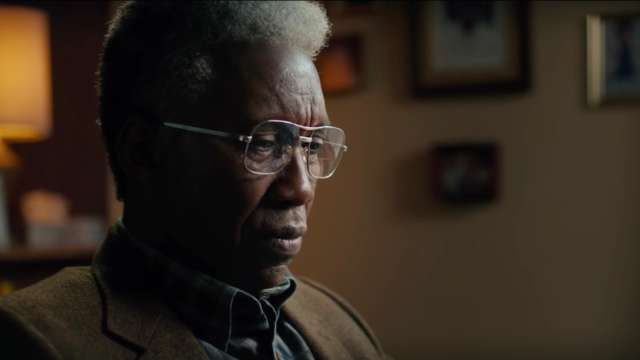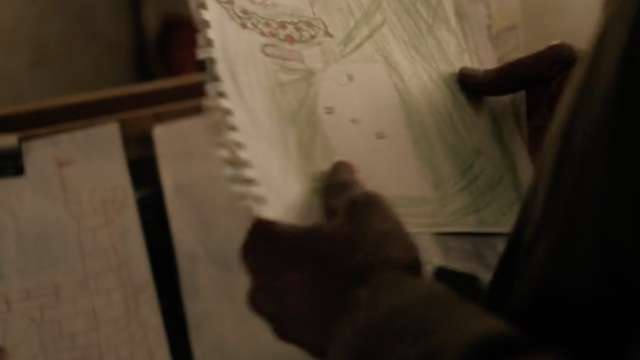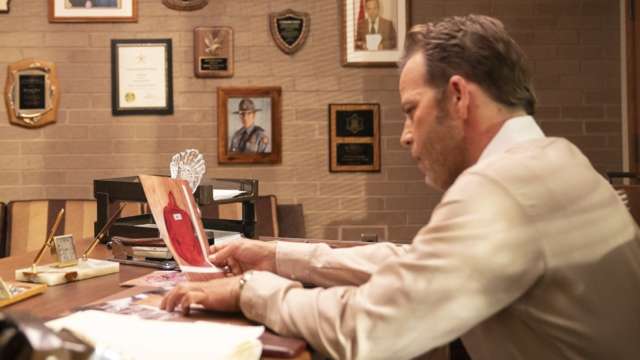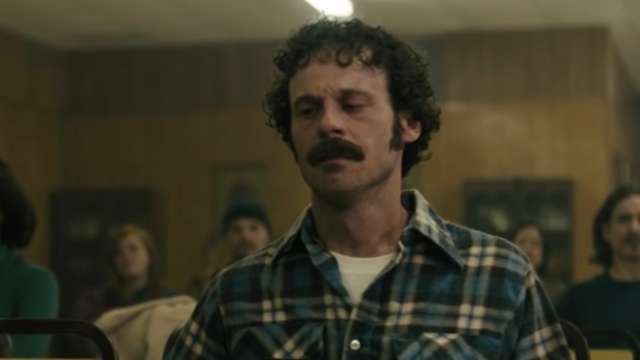On this show, you’re either dying or dead.

Things are starting to pick up on True Detective Season 3.
We got a few long-standing questions answered. Brett Woodard, the “Trash Man,” is dead. A lynch mob descended on his home, and though he was defending himself, he killed law enforcement in the process. Roland took a bullet to his leg, which caused his noticeable limp in the ’90s timeline. And Wayne put a bullet in Woodard’s head, as if the poor man wasn’t traumatized enough.
We learned that Roland survives through 2015; Episode 5 concluded with Wayne and Roland sitting on the latter’s porch, and during a long, painful conversation, we learned more bad secrets. At some point–probably in the ’90s timeline–Wayne did something awful, which caused him and Roland to stop speaking. Wayne and Roland may have killed someone and covered it up. And although Wayne, to his frustration and confusion, doesn’t remember all the details, Roland does. And it’s only a matter of time before we learn them too.
Here are the latest theories for Season 3, Episode 5: “If You Have Ghosts.” Check out our prior theory pieces to get all caught up.
1. Is Lori suspicious?

For weeks, viewers have suspected Amelia, Wayne’s wife, of foul play. She seems much too enthusiastic about the case; what better way for a murderer to hide in plain sight than to investigate the murder herself?
In Episode 5, we get formally introduced to Lori, the woman who Roland met at the church questioning in the prior episode. She and Roland have moved in together. And already, people are wondering if she also had something to do with the abductions and killings.
The evidence for this is scant: She’s close to the case, she’s not a suspect (which, by Agatha Christie law, means she is a suspect), and she majored in poultry science, a direct call back to the Hoyt chicken CEO, whom we suspect had something to do with Julie’s abduction, because he wanted a grandchild to replace the one who died.
Lori probably didn’t do either deed herself. But if she is works for Hoyt, as her degree might imply, she may know more than she’s letting on. And if Wayne is the one who discovers this connection, that might be one of the several grudges that old Roland is carrying.
2. Everything in pink

In the ’90s, a homeless teen remembers seeing Julie as a runaway. He recalls that she called herself a lost princess and referenced “pink rooms.” This is consistent with her childhood drawings, in which she draws pink rooms and castles. Something is going on with these pink structures; maybe they reference where Julie was kept, especially if she knew her captor prior to the final abduction.
Some theorists have tried to identify the room. A comparison between Julie’s drawing of a pink room and the actual kitchen of a town person has some eerie similarities. Could this man be involved somehow, since he lives near where the children’s toys were found? He also declines the detectives’ request to search his home, which is within his rights, but feels a little suspicious.
3. Who planted the backpack?

In 2015, we learn that Harris James, who worked the Woodard crime scene in the ’80s, went missing in the ’90s. We also learn in the ’90s that Will’s backpack was planted at the scene of the crime in the ’80s, to incriminate Woodard and bring the case to its conclusion.
So who planted the backpack? Probably Harris. When the backpack is found, he’s the first one to connect it to the “Purcell boy,” And from then on, that becomes the established narrative.
If Wayne and Roland end up killing someone in the ’90s timeline, Harris would make an excellent candidate. He might even be the culprit who removed the unknown fingerprints from the evidence room.
4. Is Tom bad?

The voicemail that Julie leaves with the tipline in the ’90s is deliberately vague. It implicates the father, Tom, as a bad person, who she accuses of not being her real father and of kidnapping her.
The simplest conclusion is that Julie has been brainwashed by her captors to hate her father, possibly so she doesn’t try to escape or seek him out. But maybe Tom was truly abusive? What if this whole time, he was the one, rather than his brother-in-law, who drilled the peephole into her wall? She may have had good cause to run away this whole time. It doesn’t defend what her captors did to her and her brother, obviously. But we’ve been assuming that Tom is innocent. It’s been well-established that he may have not been Julie’s biological father. But he may be worse than we originally suspected.
5. Which man is pretending to be her father?

The biggest True Detective debate currently on Reddit (this is only one of several threads) is whether Julie is referring to Tom or to Attorney General Gerald Kindt when she mentions a man who’s pretending to be her father on the voicemail. The language is just vague enough that with some mental gymnastics, a viewer could believe that Julie is talking about either.
Most Redditors are skeptical, however. It’s hard to believe that upon seeing the Tom and Kindt at the live press conference, Julie would be deliberately misleading about the person who terrifies her most, or would incriminate Tom unless she meant to do so.
6. Whose voice is on the voicemail?

And lastly, here’s a disturbing thought: We’re all just assuming that the voicemail is Julie’s. What if it’s someone else who’s trying to incriminate Tom or bring an end to the case?
What if Amelia was the one who left the message? We know, by her own admission that she’s very good at taking on different identities and pretending she’s someone she’s not. We also know she has a true crime book she wants to finish about the Purcell case, that might get delayed as more information surfaces. This voicemail could be a sick, but effective way to bring the case–and its sordid story–to a definitive close.
